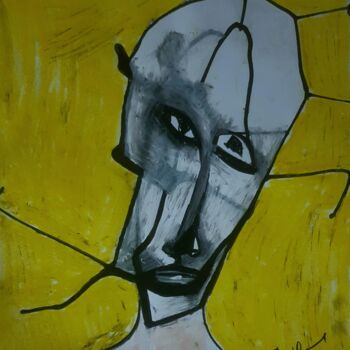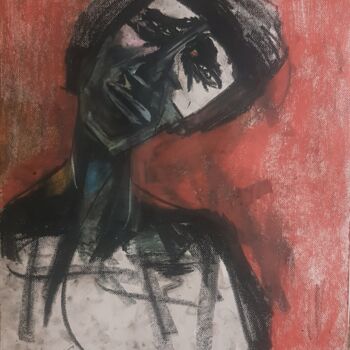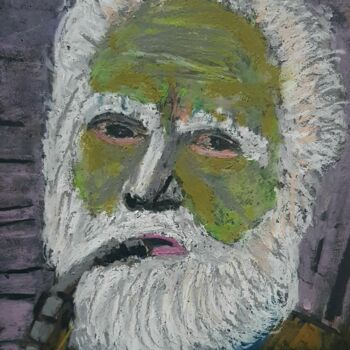Acheter en leasing l’œuvre ""A Cry For Help: A Visual Representation" par Tashfeen Rizwan avec option d’achat
Les Peintures de Tashfeen Rizwan sont disponibles à la location avec option d’achat
Choisissez vos mensualités:
Demande d’informations sur le leasing ""A Cry For Help: A Visual Representation"
Contactez-nous, un expert en financement reviendra vers vous sous 24h:
Questions fréquemment posées
Quels sont les avantages du leasing d’œuvres d’art ?
- Flexibilité financière: Vous pouvez profiter d’œuvres d’art exceptionnelles de grande valeur sans investissement initial important.
- Avantages fiscaux: Bénéficiez d’avantages fiscaux potentiels, les loyers pouvant être déduits en tant que dépenses d’entreprise.
Comment sont fixés les prix des mensualités du leasing d’œuvres d’art ?
- Le coûts dépendent de la valeur de l’œuvre, de la durée du contrat de leasing, et des services éventuels inclus comme l’installation.
Peut-on acheter l’œuvre après la période de leasing ?
- Oui, sur ArtMajeur les contrats de leasing offrent une option d’achat à la fin du contrat, permettant aux clients d’acquérir l’œuvre à un prix déterminé (valeur résiduelle).
Comment la sécurité et l’assurance des œuvres sont-elles gérées ?
- L’assurance pendant la durée sur contrat de location est de la responsabilité du client. Il est donc important de vérifier les détails de votre contrat d’assurance afin d’être certain que vos œuvres en leasing sont bien couvertes en cas de dommage.
Quelles sont les conditions pour mettre fin au contrat de leasing avant son terme ?
- Sauf conditions particulières, les contrats de crédit-bail sur les œuvres d’art engagent le client sur le paiement de la totalité du prix de l’œuvre, les payments sont donc dus jusqu’au terme du bail.
"A Cry for Help: A visual representation of the injustices f (2022)
Peinture par Tashfeen Rizwan - 28x20,1 in
À propos de l'auteur
I was not born into privilege, but I was born with a gift: the ability to see the world not only as it is, but as it could be. My earliest memories are steeped in color and form, shaped by the presence of my father—an artist whose canvases held more truth than words ever could. Our home was a living gallery, where creativity was not a pursuit but a way of being.
I grew up a quiet observer in a noisy world, introverted by nature but deeply tuned to the subtle rhythms of emotion and gesture. As a teenager, I discovered a piece of wood and began to carve intuitively. Each cut felt like a conversation with something ancient within me. That first sculpture revealed to me that art was not an act—it was a necessity.
My path as a professional began when my father founded Mother Gallery in Larkana. I spent sixteen years immersed in its creative atmosphere, not merely as a curator, but as a learner, a listener, and a translator of visual thought.
The gallery became my university—a place where I engaged with artists, scholars, and thinkers who challenged and expanded my perceptions. I curated exhibitions that reflected humanity’s many layers, organized forums that gave voice to complex questions, and built a space where intellect met emotion.
Then the world paused. The pandemic turned down the volume of everyday life, and in that stillness, I returned to myself. I picked up a brush, and what began in solitude grew into a voice. My work today exists at the intersection of psychological expressionism and abstract figuration. I work primarily in intense portraiture—my figures often emerge from geometric tension, layered colors, and instinctive lines that reveal the emotional landscapes within us all.
Stylistically, my work resonates with the emotional urgency of post-war expressionists, yet my language is my own. I am drawn to human suffering, inner silence, resilience, and social consciousness. I often say: “My canvas does not just reflect the world—it questions it.” Each figure I paint appears to speak back, not in submission, but in resistance.
Cultural identity and memory form another essential layer of my practice. I am deeply rooted in the ancient heritage of the Indus Valley Civilization. Mohenjo-Daro, with its silent stones and profound mysteries, influences my palette and symbolism. I strive to bring modern representations of this heritage into contemporary global dialogues.
Today, my work has been exhibited internationally, selected for tech collaborations, featured on book covers, and celebrated in both traditional and digital spaces. Yet these milestones are only part of the journey. My true commitment is to creating art that bridges silence and speech, the personal and the political, the seen and the felt.
Art is not what I do. It is who I am. Without it, I would wither.With it, I endure, I remember, I become.
Because without art, we are merely shadows.And with it—we are infinite.
-
Nationalité:
PAKISTAN

- Date de naissance : 1977
- Domaines artistiques: Œuvres d’artistes professionnels,
- Groupes: Artiste professionnel Artistes Contemporains Pakistanais






